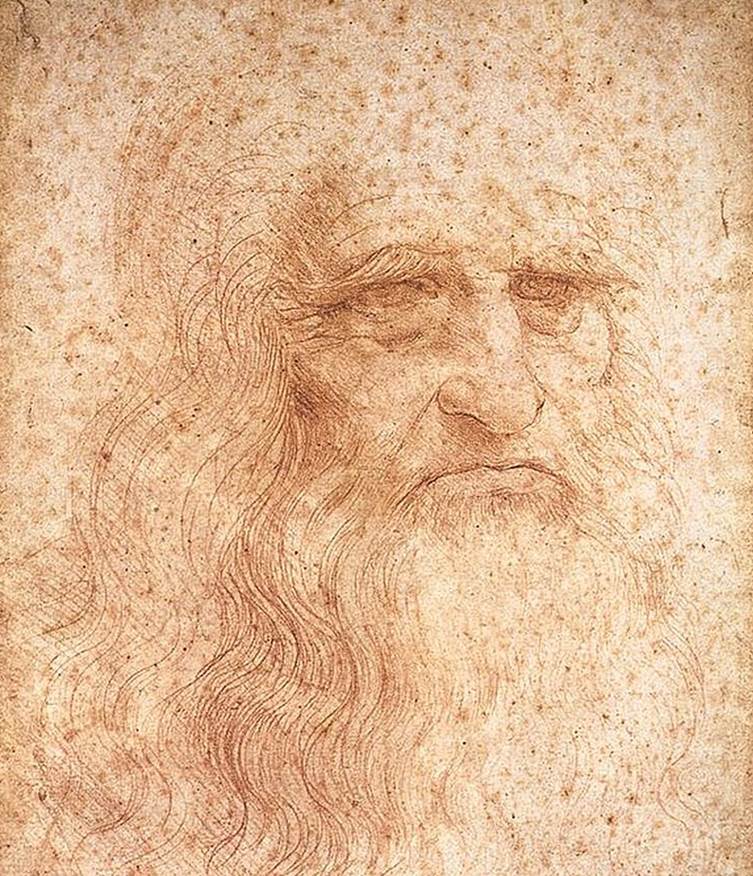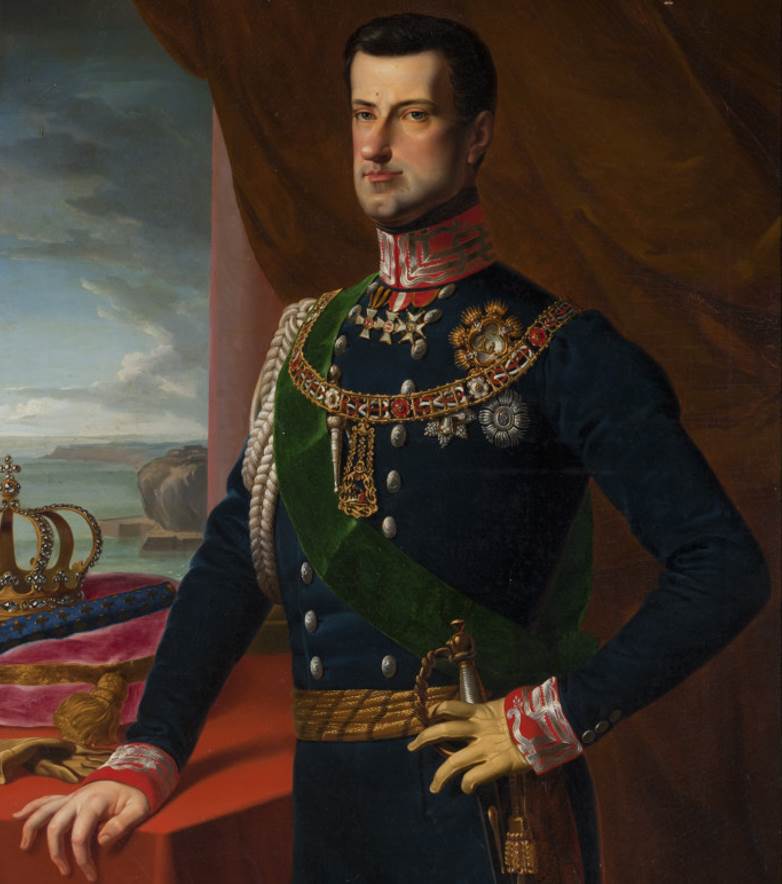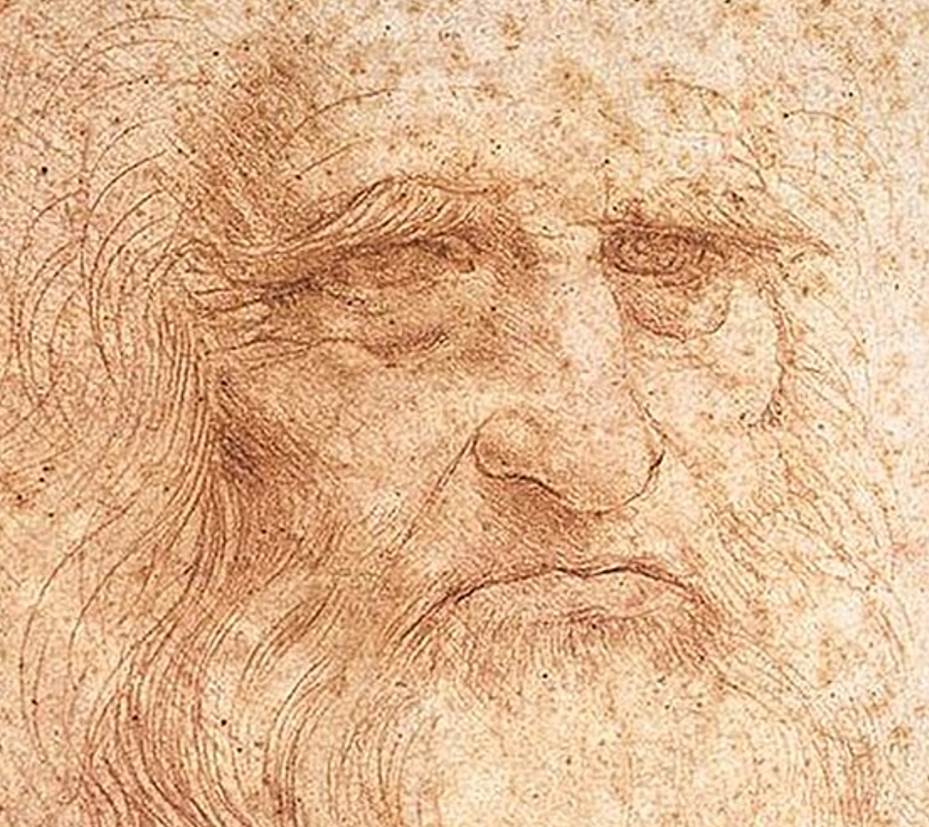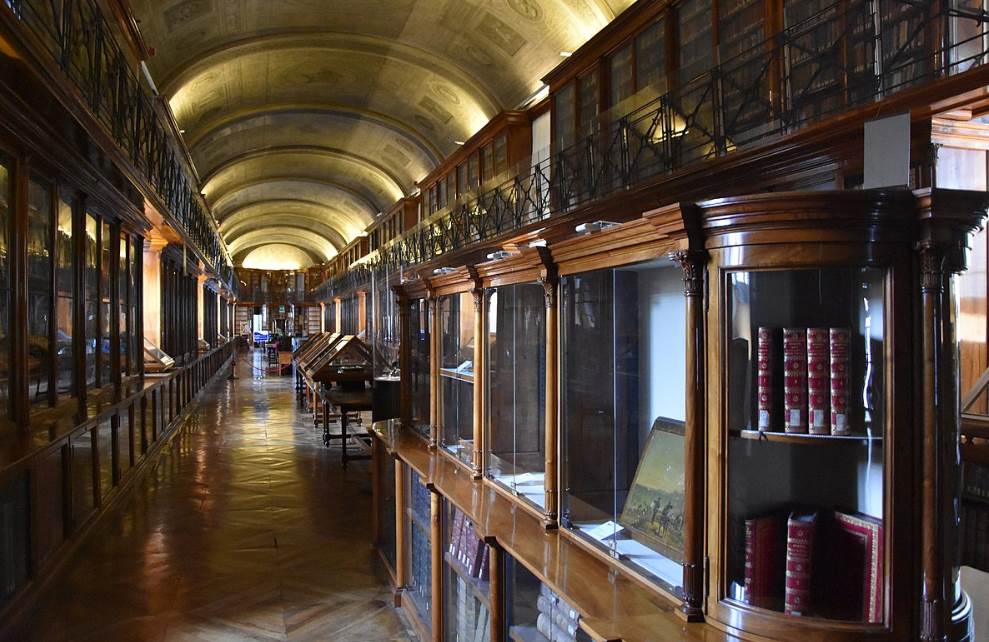Is this remarkable drawing a self-portrait by Leonardo da Vinci (1452-1519), the Great Italian artist, and the epitome of a polymath, or not?
This question has been asked by art historians since the 19th century, and there hasn’t been a conclusive answer to it yet.
Let’s take a closer look at some of the most interesting facts about Portrait of a Man in Red Chalk, a work presumably by the hand of da Vinci, the great master of the Renaissance master.
1. It was probably created during the artist’s second period in Milan
Leonardo da Vinci hardly needs an introduction, mainly because he is considered to be one of the greatest geniuses to have ever lived.
He was a polymath in every sense of the word as his talents encompassed a wide variety of fields. Drawing and painting just happen to be the best known.
That’s because he left behind an oeuvre of several world-famous masterpieces, including the Mona Lisa painting and The Last Supper to name just a few.
This particular drawing is believed to have been produced around 1510-1512, a time when da Vinci lived in Milan, the second period of the artist in the city (he lived here between 1482 and 1499 as well).

2. The man appears to be older than Leonardo da Vinci was at the time
One of the most intriguing facts about Portrait of a Man in Red Chalk is that the depicted man appears to be very old. This is remarkable because da Vinci was between 58 and 60 at the time.
This is the main reason why some art historians doubt the attribution to him because the depicted man could easily be in his seventies or even eighties.
This sense of age is strengthened by the fact that the man seems to miss his upper teeth which deepens the groves in his face.
There are two elements, however, that might explain the old appearance if it’s Leonardo:
1. These were turbulent times in Milan because the city was attacked by a confederation of Swiss, Spanish, and Venetial soldiers who drove the French out of the city.
2. It’s known that Leonardo was suffering from bad health. He had multiple strokes during the final years of his life which left him partially paralyzed.
So is Portrait of a Man in Red Chalk a self-portrait by Leonardo da Vinci?
This remains an open question.
3. We know somewhat how da Vinci looked from a Raphael painting
Many artworks have been produced in which da Vinci might be featured. Some have been confirmed by contemporary accounts, including the depiction in a work by Raphael called ‘The School of Athens.”
This is one of the monumental frescoes at the Apostolic Palace in Vatican City. The rooms inside the palace are now referred to as the “Raphael Rooms.”
It’s assumed that the figure representing Plato was modeled on Leonardo da Vinci. He was present in Rome when Raphael completed this work so this may be correct.
This depiction also clearly shows his long hair and beard. He does appear to be much younger than in the drawing.

4. There’s another confirmed red chalk drawing of Leonardo da Vinci
Leonardo lived with the Melzi family during his second stay in Milan, a prominent noble family in the city. The family’s son, Francesco Melzi (1491-1570), became the pupil of the famous artist and they had a father-son-like relationship.
During this period, he also drew his master using red chalk and provides a side view of the artist. This makes it hard to judge whether or not all the facial characteristics match those of the presumed self-drawing.
This extraordinary drawing has dimensions of 27.5 x 19 centimeters (10.82 x 7.48 inches) and is part of the collection of the Royal Library at Windsor Castle.

5. It was purchased by the King of Sardinia in the 19th century
Little is known about what happened to the Portrait of a Man in Red Chalk until it was sold by an antique dealer named Giovanni Volpato in 1839.
Where he got the drawing remains unknown but it was probably in either England or France.
The buyer was a certain Charles Albert (1798-1849), the King of Sardinia at the time and the man who granted the first constitution of Italy. It was named in his honor as it’s called the “Albertine Statute.”
His reign started in 1831 and ended with his death in 1849. The drawing moved along with him to the Royal Palace of Turin which was owned by the House of Savoy in the city in the northern part of Italy.

6. The drawing was saved from the Nazis but severely damaged in the process
Another reason why it has been identified as a self-portrait of Leonardo da Vinci is the incredible quality of the drawing.
It possesses the same level of quality as other drawings and preparatory sketches made by the artist.
The same can, unfortunately, not be said about the material with which it was produced. It was drawn on a fragile piece of paper using red chalk. An inscription dating back from a later date reads “Leonardo da Vinci, portrait of himself as an old man.”
This remarkable work of art was moved from Turin to Rome during World War II in an attempt to keep it safe from the Nazis. This worked out fine, but the paper was heavily damaged in the process.
A study conducted in 2014 has determined the state in which the drawing is today, and work is being done to preserve it as optimally as possible.

7. How big is Portrait of a Man in Red Chalk by Leonardo da Vinci?
Just like most scribblings by Leonardo, this is a relatively small work of art.
It’s slightly larger than the portrait produced by Melzi because it has dimensions of 33.3 × 21.6 centimeters (13.1 × 8.5 inches).
8. Where is the drawing located today?
The drawing was returned to Turin following the conclusion of World War II and it’s currently housed at the Royal Library of Turin.
This immense library was established in 1842 by the king who bought the drawing. It’s located on the ground floor of the Royal Palace of Turin and holds:
- 200,000 prints
- 4,500 manuscripts
- 3,055 drawings
- 5,019 sixteenth-century books
- 20,987 pamphlets
Unfortunately, because of the fragile state in which the artwork is today, it’s not on public display.



